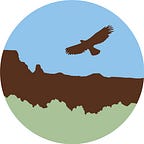At Risk: Solitude, Habitat & History
It’s time to speak up for Oregon’s vast Owyhee Canyonlands
As an American, you are the “public” in “public lands.” It’s your right and your responsibility to weigh in on how federal agencies manage these lands.
This summer, the Bureau of Land Management put out their proposal for how they intend to manage 4.6 million acres in of sagebrush country in southeastern Oregon for the next two decades.
That’s an area larger than Connecticut and Rhode Island combined. And it’s home to a number of endangered and threatened species of plants and animals.
Unfortunately, the BLM’s preferred plan does not protect the wildest lands in this area. It ignores local stakeholder input, and leaves wild desert places to camp, raft, hunt, fish, and hike vulnerable to development pressures.
If you care about public lands and wildlife, you’ll want to weigh in on this plan before the comment deadline on August 28.
Here’s a look at what’s at stake.
More than a Million Acres of Wild Lands
Few places in the lower 48 states are as wild as the Owyhee Canyonlands. And, if they are, they have already earned strong federal protection.
The BLM has recognized more than a million acres of “Lands with Wilderness Characteristics” in this part of southeastern Oregon, but this draft plan amendment’s preferred alternative doesn’t protect even a single acre of LWCs — contrary to what most public land users want to see in this vast, intact and wild landscape.
These large roadless areas should be cared for part of our national heritage.
To comment now, visit ONDA.org.
Important Native Plant and Wildlife Habitat
In the Owyhee, you’ll find some of the most wild, intact, healthy sagebrush habitat in the entire country.
Big sagebrush predominates in this terrain, along with rabbitbrush and bunchgrass.
A wide variety of wildflowers — including, but hardly limited to phlox, tansy-leaved evening primrose, balsamroot, prairie starflower, cushion desert buckwheat, death camas, bugle lungwort, spurred lupine, large-headed clover, desert paintbrush, and fiddleneck — put forth a progression of blooms from spring through early fall.
This diversity of plants species supports all manner of wildlife from great golden eagles to tiny pygmy rabbits. Bighorn sheep graze the canyon’s rim, while brown trout ply the wild rivers far below. In the predawn light of spring, greater sage grouse strut and swagger in an elaborate mating dance unique to the sagebrush steppe.
Treating these wild areas with the respect they deserve is the only way to protect critical habitat along rivers and streams and allow native fish and wildlife to flourish.
Thousands of Years of Human History
For at least 13,000 years semi-nomadic hunters and gatherers inhabited the Owyhee Canyonlands.
In the area’s more than 500 ancient campsites and hunting blinds, archaeologists have unearthed weapons and stone tools made from chert, obsidian, agate, jasper and opalite. These lithic scatters include bones of bighorn sheep and deer hunted centuries ago, as well as remnants of seeds and plants. A number of excavated sites reveal objects of an ancient daily life including pottery, clay figurines, woven baskets, nets and sandals.
These resources and the opportunity to learn from them are worth protecting.
To comment now, visit ONDA.org.
An Opportunity to Buffer against Climate Change
The last time the public was given a chance to comment on this plan was in 2012. A lot has changed between then and now. There’s no doubt that we’re living in a warming world, and yet the BLM completely sidestepped the crucial issue of climate change in this environmental review.
Preeminent scientist E.O. Wilson has argued persuasively that we need to to protect half the land and half the sea in order to manage sufficient habitat to ensure the long-term health of our planet.
Right now we have an opportunity to manage 4.6 million acres to protect habitat. The BLM could choose to prevent the motorized use and livestock grazing that would contribute to and exacerbate the effects of global climate change — but they won’t unless the public demands it.
Pure and Simple Recreation and Solitude
Do you like to hike? Hunt? Fish? Raft? Watch birds? Count shooting stars? Do you value time alone to relax, to think and to recharge?
Venture in a remote stretch of the Owyhee Canyonlands and you’ll find endless opportunities for primitive recreation where you’re not going to see anyone else. For days.
These unspoiled wild places provide outstanding opportunities for solitude and primitive recreation that we can pass on to the next generation.
You Can Protect the Owyhee
Don’t miss your opportunity to comment on the BLM’s misguided resource management plan for the Owyhee Canyonlands.
Speak up for native plants and wildlife. Respect and cherish the millennia-old cultural artifacts. Give the generations that will come after us a chance against a changing climate. Let your kids and grandkids get to know and benefit from this wild landscape.
